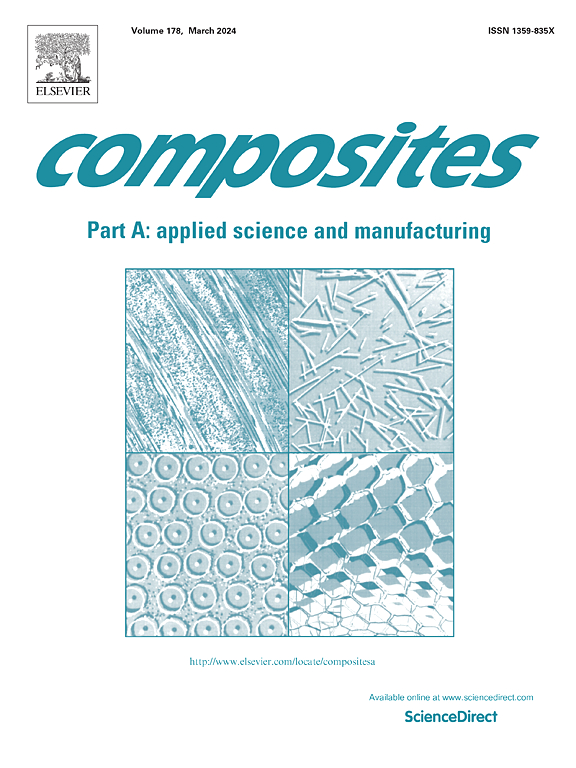Upcycling aluminum-plastic packaging waste into high thermal conductivity and fire safety composite
IF 8.1
2区 材料科学
Q1 ENGINEERING, MANUFACTURING
Composites Part A: Applied Science and Manufacturing
Pub Date : 2025-03-27
DOI:10.1016/j.compositesa.2025.108887
引用次数: 0
Abstract
Aluminum-plastic multilayer films are widely used in packaging applications. However, such metal/polymer composites are challenging to recycle. And existing separation and recovery methods face problems such as low purity, poor performance and secondary pollution. This study proposes a strategy to directly recycle aluminum-plastic packaging waste (APPW) into materials with high thermal conductivity and excellent fire-safe performance. The melt fluidity and processability of APPW were effectively restored by solid-state shear milling (S3M). Expandable graphite (EG) and Expanded graphite (EGx) introduced, acting as a “bridge” between Al flakes present in APPW, forming a continuous Al-EG-EGx thermal conductivity network. Finite element simulations demonstrated that the introduction of Aluminum hydroxide (ATH) reduces the space available for Al and EG, promoting the development of the Al-EG-EGx network. Consequently, the composite achieved a thermal conductivity of 3.43 W/m·K with only 15 wt% graphite content. Moreover, ATH synergized with EG (EGx) to significantly enhance fire-safe performance, reducing the total heat release (THR) and total smoke production (TSP) by 48.2 % and 69.6 %, while achieving an impressive limiting oxygen index (LOI) of 54.7 % and V-0 rating in UL94. Meanwhile, tensile and flexural strengths increased by 50.5 % and 54.6 %. Our work offers a novel solution for recycling metal/polymer composite waste, transforming unrecyclable materials into value-added composites for applications in thermal management of electronic devices.
求助全文
约1分钟内获得全文
求助全文
来源期刊

Composites Part A: Applied Science and Manufacturing
工程技术-材料科学:复合
CiteScore
15.20
自引率
5.70%
发文量
492
审稿时长
30 days
期刊介绍:
Composites Part A: Applied Science and Manufacturing is a comprehensive journal that publishes original research papers, review articles, case studies, short communications, and letters covering various aspects of composite materials science and technology. This includes fibrous and particulate reinforcements in polymeric, metallic, and ceramic matrices, as well as 'natural' composites like wood and biological materials. The journal addresses topics such as properties, design, and manufacture of reinforcing fibers and particles, novel architectures and concepts, multifunctional composites, advancements in fabrication and processing, manufacturing science, process modeling, experimental mechanics, microstructural characterization, interfaces, prediction and measurement of mechanical, physical, and chemical behavior, and performance in service. Additionally, articles on economic and commercial aspects, design, and case studies are welcomed. All submissions undergo rigorous peer review to ensure they contribute significantly and innovatively, maintaining high standards for content and presentation. The editorial team aims to expedite the review process for prompt publication.
 求助内容:
求助内容: 应助结果提醒方式:
应助结果提醒方式:


